How to Send to Kindle Email in 2025: Download Books From Anywhere
Although the easiest way to read books on your Kindle is to purchase them directly from Amazon’s store, you can also load books from other sources onto the ebook reader. Join us as we show you the easiest way to do so: by sending them to your Kindle email.
A Kindle is a great investment for avid readers, and the easiest way to read on Amazon’s e-readers is by purchasing your books directly from the Kindle store. However, you can add books from other sources too. Transferring them manually with a cable can be a pain though, so here’s how you can send files directly to your Kindle using your Kindle email address.
If you’re still on the fence about buying a Kindle, you can check out our Kindle model comparison for a full breakdown of all the different options. Our Amazon Kindle vs Fire comparison is another good bet if you’re not sure, as it shows you the differences between Amazon Fire tablets and ebook readers.
-
07/22/2023 Facts checked
Added updated information about Kindle EPUB support.
-
03/13/2025 Facts checked
We’ve updated details regarding compatible Kindle file types.
Why Send an Email to Your Kindle?
The reason for sending an email to your Kindle is to quickly and easily transfer a book that you got from an external source (meaning anywhere but the Kindle store) to your Kindle device. This saves you from having to connect the device to a computer using a USB cable.
How to Find Your Kindle Email Address
Your Kindle’s email address isn’t immediately obvious if you’ve just started using the device, so you might be wondering, How do I find my Kindle email address? Thankfully, finding it is pretty easy, so you won’t need to contact Amazon Kindle support for help.
- Enter the Settings on Your Kindle
Unlock your Kindle by pressing the button on the bottom of the device. Once on the home screen, swipe down from the top of the screen and then tap on “all settings.”
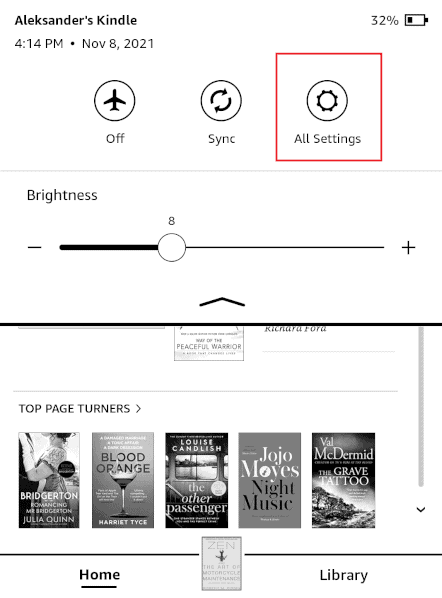
- Enter Your Account Overview
Once in the settings menu, tap on “your account.”
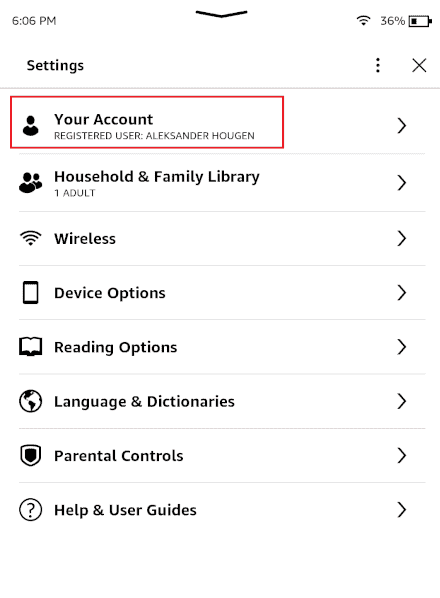
- Copy or Write Down Your Kindle Email Address
At the bottom of the list that appears, you’ll see your Kindle’s email address spelled out, ending with “@kindle.com.” Copy it or write it down somewhere else.
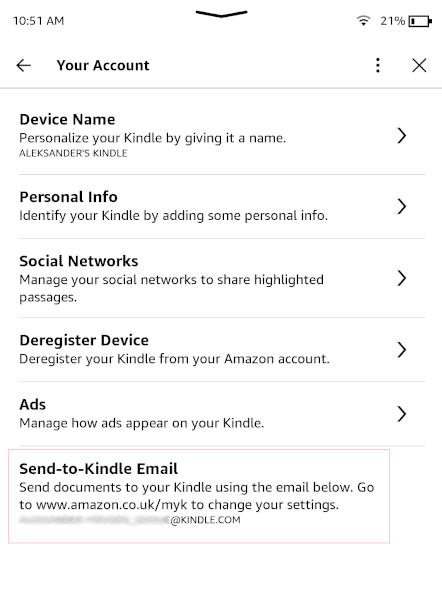
Now that you have the unique email address attached to your Kindle in hand, we can move on to the next step.
How to Send an Email to Your Kindle Device
Once you’ve figured out your Kindle email address, it’s time to send some documents or ebooks to it. For the following steps we’ll assume that you already have the e-book or document file that you want to send. Make sure that the file is formatted as an EPUB file, as Amazon has discontinued support for other e-book formats (read our EPUB vs MOBI guide).
You can also send files in the following file types: PDF, DOC, DOCX, TXT, RTF, HTM, HTML, PNG, GIF, JPG, JPEG or BMP. Before sending anything though, you’ll need to make sure your Amazon account is set up for forwarding documents to your Kindle.
- Log in to Your Amazon Account
Open a web browser and go to www.amazon.com. Click the button that says “hello, sign in” and enter your login credentials.
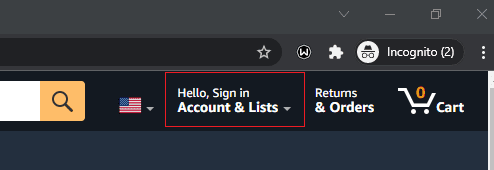
- Enter Your Account Settings
Once you’re logged in, the button you just clicked should be replaced with your name. Click it to access your account settings and then select “your devices and content.”
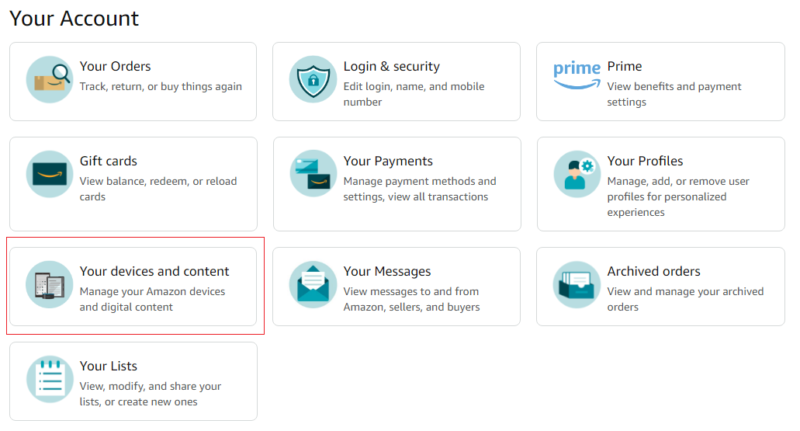
- Enter Your Device Preferences
You should now see an overview of all the digital content you’ve purchased from Amazon. Click on the “preferences tab” on the top toolbar.

- Find the Personal Document Settings
Inside the preferences menu, scroll down the list of settings until you see “personal document settings.” Click it, which should expand the section.
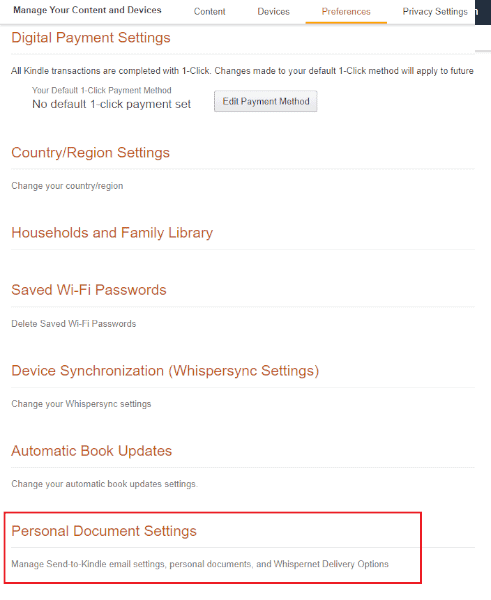
- Enable Personal Document Archiving
Inside the expanded section, you’ll see a heading that says “personal document archiving.” Click the button there that says “edit archive settings” and then check the box in the pop-up window before clicking “update.”

- Add Your Regular Email Address to the List
Next up you have to allow emails from one of your regular email accounts. A bit farther down you’ll see the heading “approved personal document e-mail list.” Click the button underneath it that says “add a new approved e-mail address” and type the email address you’ll be sending documents from. When you’re done, click “add address.”
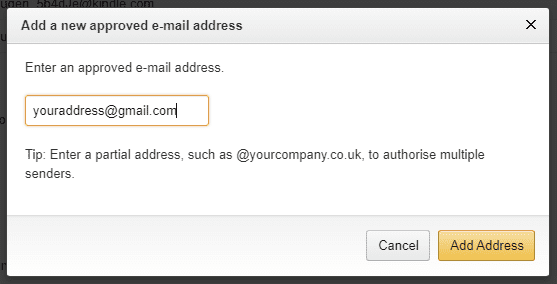
- Send a Document to Your Kindle Email Address
Open up your regular email client and create a new draft email. Add your Kindle email address to the recipient field and leave the subject line and body blank. Attach the files you want to send to your device and hit “send.”
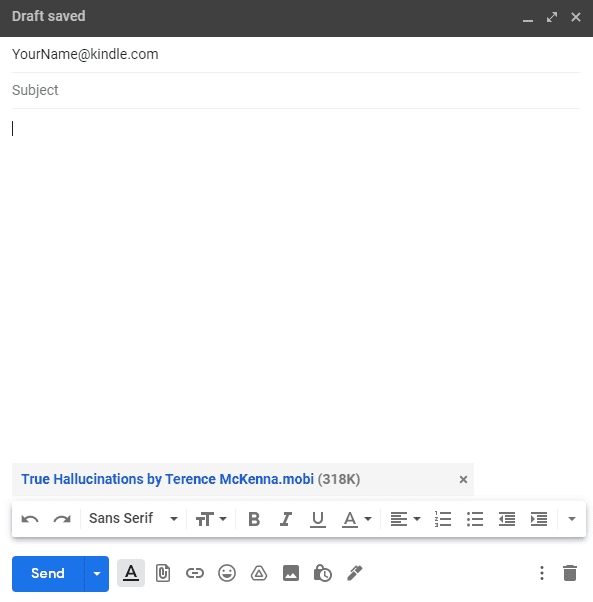
That’s it. Within a few minutes, you should be able to access the book or document you sent either from your Amazon Kindle device or the Kindle app.
Final Thoughts
That’s it for our Kindle email guide. If you didn’t know about this feature before, hopefully we’ve shown you how you can unlock your Kindle’s full potential.
If you’re new to your device and want some more general advice, you can check out our Kindle setup guide for initial instructions and our Kindle user guide for a more in-depth look at what the device can do.
What did you think of our guide? Do you agree that sending documents and ebooks via email is the easiest way to get them onto your Kindle? Or do you think the setup process is a bigger hassle than simply transferring via a USB cable? Let us know in the comments below. Thank you for reading.
FAQ
Kindles support various different document formats. The supported file types include the e-books in EPUB and PDF, Microsoft Word documents like DOC and DOCX, TXT, images (JPG, JPEG, PNG and BMP) and finally RTF files.
Yes, as long as the book is in one of the supported formats (EPUB or PDF), you can add it to your Kindle library regardless of where you downloaded it from.
Your Kindle email does not have a password, as it is not like other email addresses and cannot be used for anything except to send files to your Kindle.

